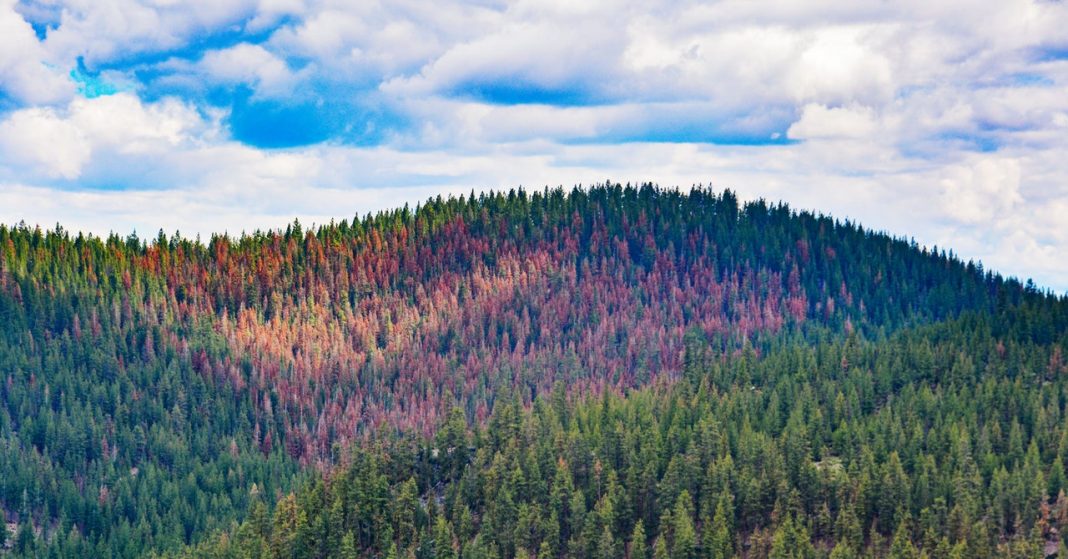This story originally appeared in The Guardian and is part of the Climate Desk collaboration.
Scientists have discovered a record number of dead fir trees in Oregon, a foreboding sign of how drought and the climate crisis are ravaging the American West.
A recent aerial survey found that more than a million acres of forest contain trees that have succumbed to stressors exacerbated by a multiyear drought. Images released by the US Forest Service show Oregon’s lush green expanses dotted with ominous swathes of red.
“It is stunning,” said Daniel DePinte, an aerial survey program manager with the Forest Service who led the agency’s Pacific Northwest region aerial survey, noting that this year saw the highest mortality rate for firs in this area in history. These evergreen conifers are less able to survive in drought conditions than other heartier trees that line the landscapes.
He and his colleagues scanned the slopes from planes several times between June and October, detailing the devastation on digital maps. During that time, it became clear that this year would be unlike anything he had seen before. The data, first reported by the environmental journalism nonprofit Columbia Insight, is still being finalized, but dead trees were spotted in areas across 1.1 million acres of Oregon forest. The scientists have taken to dubbing it “firmageddon.”
“The size of this is enormous,” DePinte said. “A lot of people out there think climate change is just impacting the ice caps or some low-level island out there, but it is actually impacting us right here in our backyard,” he said. “If this drought continues as climate change keeps on, and we continue ignoring what nature is showing us across the globe—it doesn’t bode well at all.”
An ongoing drought, paired with recent extreme heat, has left vulnerable trees like firs struggling to adapt. As the cascading effects of the climate crisis unfold, ecosystems are expected to shift. The loss of these trees are a sign that the forests may already be starting to change.
“It will be a different forest with a different feel, and it will happen across the landscape as nature decides,” DePinte said. “Nature is saying there is just not enough to support the firs, and they will over time be eliminated from those areas.”
Scientists have expected to see signs of stress in the forests, but the suddenness of the spike in mortality was alarming. Before this year, the largest area where dead trees was recorded in Oregon was in 1952, when die-offs were spotted across roughly 550,000 acres.
“This is not surprising that this is happening, but to see such a peak within the span of a year—that is concerning,” said Christine Buhl, a forest entomologist with the Oregon Department of Forestry. The underlying conditions that caused the spike—record-high temperatures and record-low precipitation—had a compounding effect on the forest because of timing, duration, and frequency.
“Hot drought is a double whammy for a tree,” she said, explaining that the roots of drought-stressed trees die back, making it harder for them to recover even when water is available. Prolonged lack of moisture, especially during growing seasons when precipitation was once more plentiful, also harms a tree’s vascular tissues that are used by the tree to draw in water.
